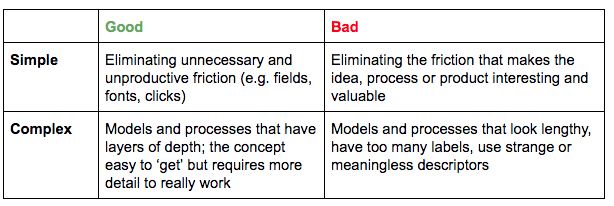The Simplification Paradox
It was 1876. William Orton, president of the Western Union Telegraph Company was approached about a new invention through which people could speak with each other - the talking telegraph.
Orton, well regarded as the leading electrical expert in the country remarked “There is nothing in this patent whatever, nor is there anything in the scheme itself, except as a toy.”
Having had his invention rejected in this manner, Alexander Graham Bell went ahead and established the Bell Telephone Company the following year. Less than a decade later over 150,000 people owned telephones across the USA and the way we communicated was forever changed.(1)
Keeping it Simple Stupid, may be stupid
The merits of simplicity are well cited. I’ve written extensively about the need to keep things simple when you are trying to make new habits and reduce customer effort to encourage action. Difficult to read fonts, cumbersome forms, slabs of weasel-word text, unnecessary clicks and confusing navigation are common road bumps that make it less likely your customer will bother.
It would be easy, then, to boil our objective down to K.I.S.S. (Keep it Simple Stupid).
But that would be a mistake.
You see, if something is too simple, people don’t value it. Too complex, people don’t use it. This is what I call the “Simplification Paradox”.
The Simplification Paradox
The Simplification Paradox first occurred to me when I was reflecting on a coffee I had with a prospective client. In the meeting I sketched a version of my Behaviour Change Model and explained to him the three barriers to behaviour change (Apathy, Paralysis and Anxiety.) He immediately got it and saw its usefulness.
A few weeks later I rang him to see where he was up to in our plans to run some training. “I’ve taken my team through the model”, he excitedly told me, “and we’re starting to implement some of the ideas we talked about”.
He was so pleased with himself.
I was crushed.
In making my model of behaviour change simple to understand, I had given him the false belief that that was enough. He didn’t value the depth of expertise required to make something seem simple, so he happily took my IP and ran with it. It cost him a coffee and me thousands of dollars.
Shortly after this exchange, I was helping another client with how to present her ideas in a proposal. She’d obviously spent a lot of time and money developing a very detailed and rigorous approach to the problems she solves, but for a prospective buyer it was impenetrable. They would not engage her because her model seemed too theoretical and complex - they couldn’t see themselves using it.
The Simplification Paradox is all around
Now that you know about the Simplification Paradox, you'll see it all around. You have probably experienced it this week. You may have:
-
Suggested something in a meeting that seemed obvious, yet no one latched on to it;
-
Launched a product or service that solves a problem, yet no one has been willing to pay;
-
Jumped past a section in a document because it was too hard to read;
-
Skirted over a process diagram because you didn’t know where it started or what it was meant to describe; or
-
Read one of my blogs and jumped to the yellow highlighted bits!
Striking the right balance
With this paradox in mind, the challenge for us in business, whether we are trying to convince a colleague or customer, is to strike the right balance between simplicity and complexity. As Alexander Graham Bell experienced, an idea that seems too simple will be undervalued. An idea that is too complex will not be used.
To be completely frank, I am still grappling with this. My desire to share the magic of behavioural science (coming up with ideas like the Simplification Paradox, for example) means I lean too often towards simple and need to get better at adding salt into the salve.
As I continue to work on this for my business, here are some ideas on how you might like to approach the task as well. I could go on, but best I leave some answers up my sleeve, right?


